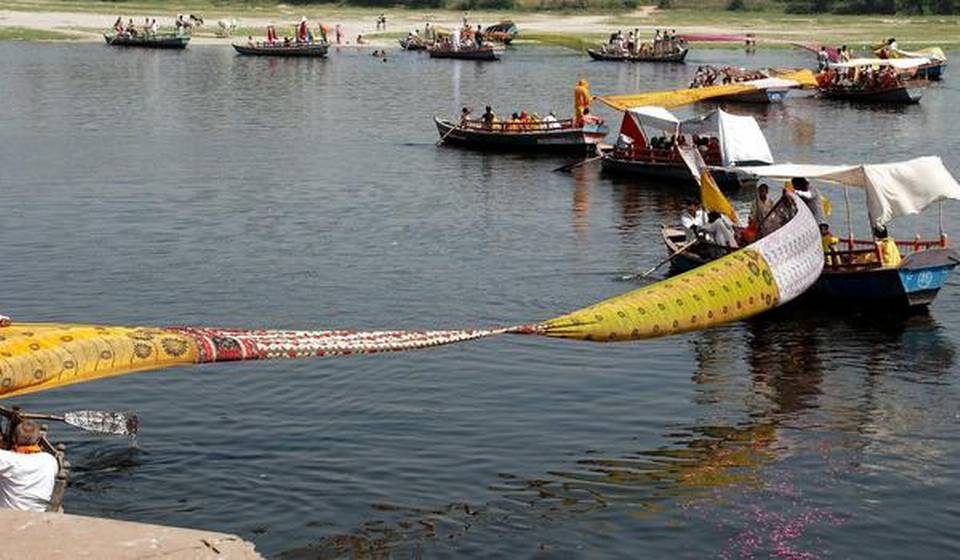Officials of the National Environmental Engineering Research Institute (NEERI) collected water samples from Yamuna river here on directions from the Supreme Court regarding overflowing drains in the Taj Trapezium Zone, an activist said.
TTZ is an area of about 10,400 sq km spread over the districts of Agra, Firozabad, Mathura, Hathras and Etah in Uttar Pradesh and Bharatpur district of Rajasthan.
In December last year, an apex court bench had asked noted environmentalist M.C. Mehta and NEERI to inspect the city of Agra and file a report within eight weeks suggesting measures to deal with the problem of overflowing drains.
The NEERI team led by Dr. Praveen Kumar collected the samples from the river on Friday, environmentalist and social worker Gopeshwar Nath Chaturvedi said.
He has been filing petitions in higher courts for cleaning and maintaining ecological flow in Yamuna river for many years.
The samples were taken by NEERI scientists from Bengali Ghat pumping station, Kosi drain, Masani drain, Ambakhar drain and Gokul barrage areas of Yamuna,” Mr. Chaturvedi said while accompanying the team.
After taking the samples, the team left for Agra on Friday to obtain samples from the river there, he added.
Meanwhile, Mr. Mehta said the team had taken water samples based on his plea for protecting the Taj Mahal that also indirectly covers pollution in Yamuna river.
He pointed out that there are two drains passing close to the Mughal-era monument and without making it pollution-free, a “clean Taj” would remain only a dream.
According to Mr. Chaturvedi, the Ganga Action Plan was started in 1985 after Mr. Mehta approached the apex court.
Mr. Mehta’s submission, then, was that without cleaning major tributaries like the Yamuna, Ganga can not be cleaned, Mr. Chaturvedi said.
In 1998, Mr. Chaturvedi had filed a PIL in Allahabad High Court for making Yamuna pollution-free.
On the basis of the HC order, the government had taken steps including keeping a check on the drains, preventing discharge of industrial waste into the Yamuna, etc.
However, owing to indifferent attitude shown by officials, the river became more polluted, Mr. Chaturvedi alleged.
In the last hearing in SC when Mr. Mehta pleaded about rising pollution levels of the river from Delhi to Firozabad in UP, the court ordered for submission of the report by NEERI.
Mr. Chaturvedi also criticised the way the Centre’s flagship Namami Gange Programme was being implemented.
He argued that with unplanned work, the river would not turn pollution-free either in Vrindavan or in Mathura.
The activist said the Kosi drain should be included in the government plan as industrial waste and drain coming from Kosi, Shergarh and Chatta towns discharge in the stretch of the river in Vrindavan.
Without including Kosi drain in the plan, the stretch of the river in Vrindavan can not be cleaned, he said adding that Mathura and Vrindavan have been taken as separate units for implementation of Namami Gange Programme.
Under Namami Gange plan, Mathura was divided into four zones. However, the work is in progress in only two sones, (trans Yamuna and Masani zone), Mr. Chaturvedi claimed.
Even a detailed project report (DPR) for the other two zones – Masoom Nagar zone and Koyala Alipur zone – has not been prepared so far, he said.
In such a situation, I was left with no other option but to request Mehta to do something for cleaning the Yamuna,” Mr. Chaturvedi said.

